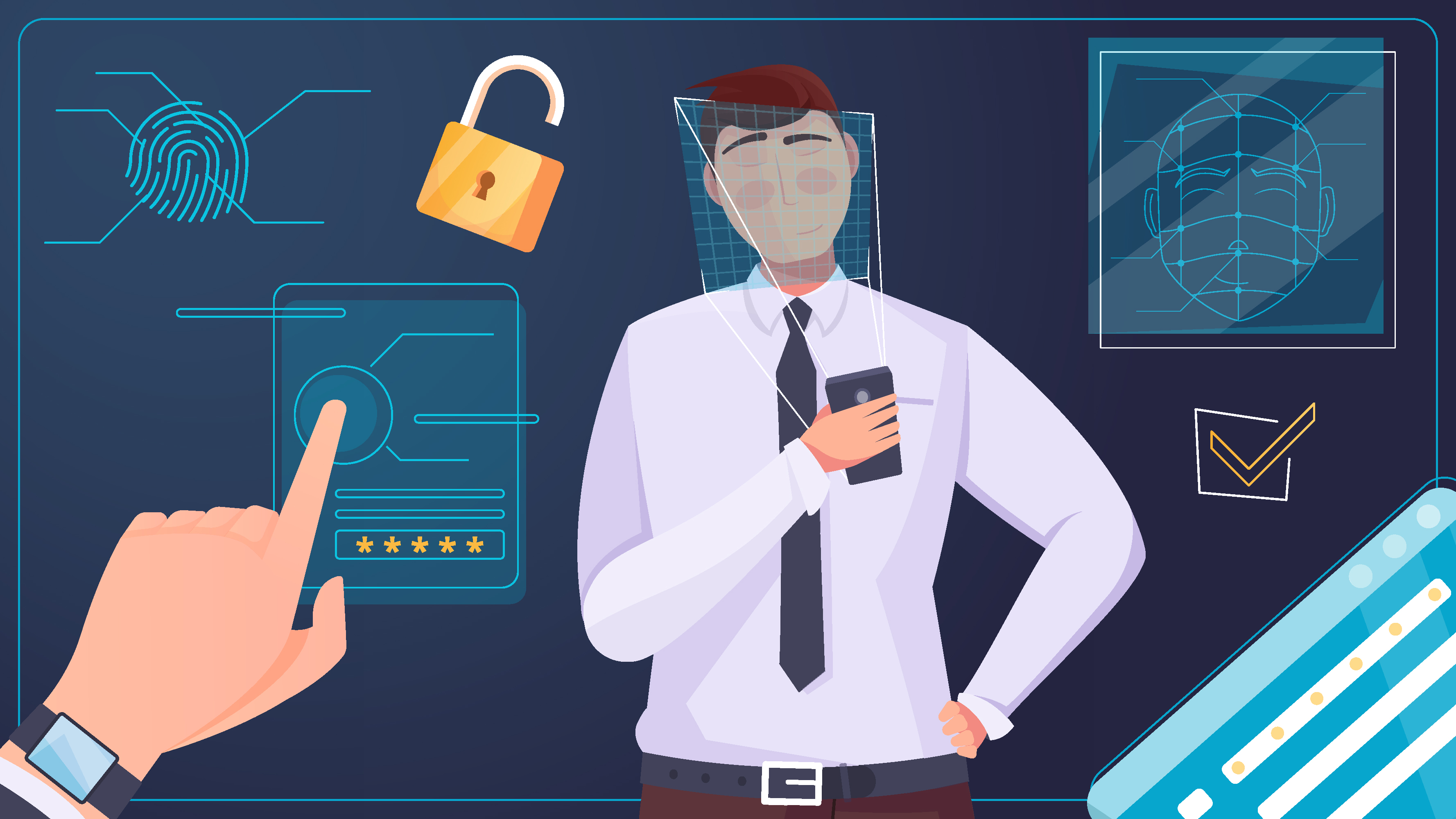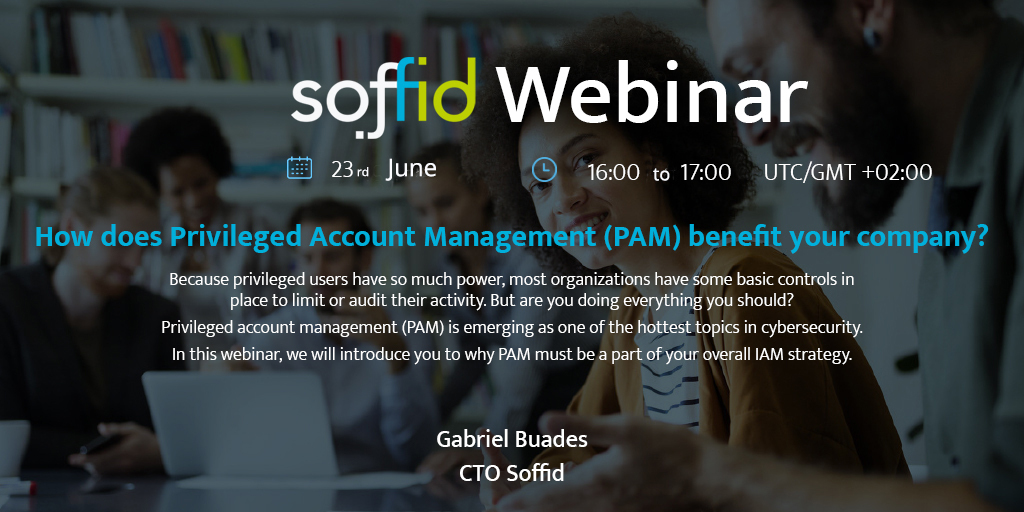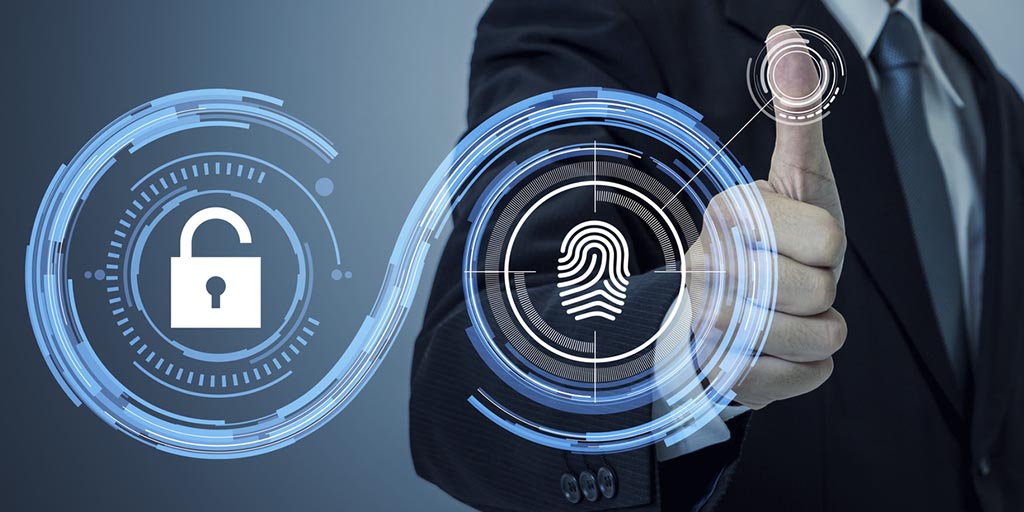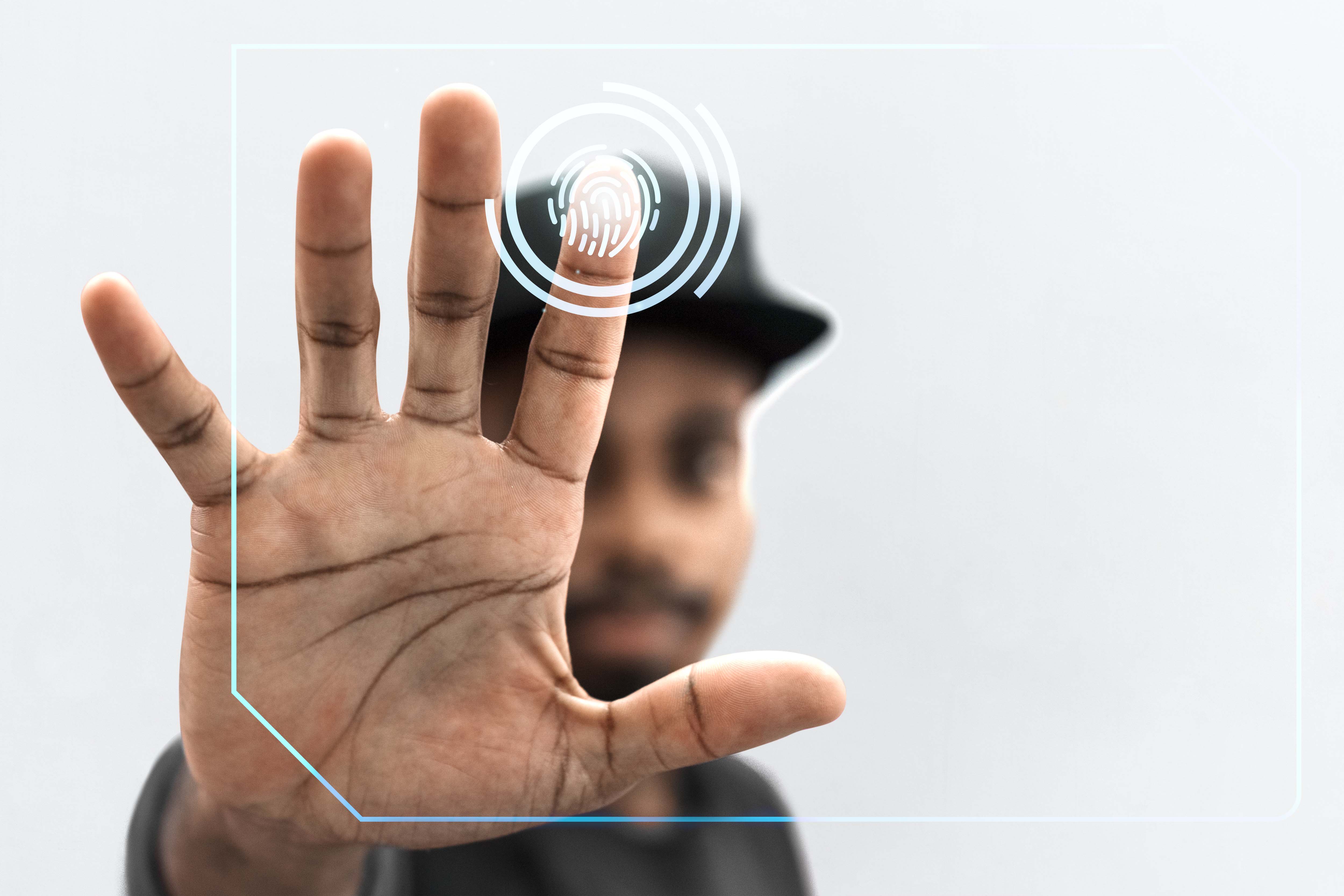
por Rebeca | Abr 12, 2023 | Ciberseguridad, Cliente, Noticias, Recursos, Soffid
El identity and access management (IAM) es un conjunto de procesos y tecnologías que se utilizan para administrar y proteger los datos y recursos de una organización. Se trata de un componente fundamental de la seguridad de la información y es esencial para proteger los datos de clientes, empleados y socios comerciales.
Hablamos de un enfoque sistemático para la gestión de las identidades y los accesos de los usuarios a los recursos de la organización. Esto incluye la identificación y autenticación de los usuarios, la autorización de los usuarios para acceder a los recursos, la gestión de las cuentas de usuario y la supervisión del acceso de los usuarios.
¿Por qué es tan importante una buena gestión y estrategia?
La gestión de identidad y acceso es particularmente importante en un entorno en el que las organizaciones tienen que hacer frente a amenazas cada vez más sofisticadas. Los ciberdelincuentes pueden utilizar una variedad de técnicas para obtener acceso no autorizado a los sistemas de información.
Por tanto, una buena estrategia de IAM incluye la gestión de contraseñas, la autenticación de múltiples factores y la gestión de privilegios. La gestión de contraseñas es especialmente importante, ya que si son débiles o comprometidas, son una de las principales vías por las que los ciberdelincuentes pueden obtener acceso no autorizado.
Además, también ayuda a cumplir con los requisitos legales y normativos. Las leyes y regulaciones relacionadas con la privacidad de datos y la protección de información personal exigen que las organizaciones tomen medidas para garantizar que sólo las personas autorizadas tengan acceso a la información confidencial. La implementación de una estrategia de IAM puede ayudar a cumplir con estos requisitos, lo que puede evitar sanciones y multas.
La gestión de identidad y acceso es esencial para proteger los datos y los recursos de una organización. Con una estrategia de IAM bien diseñada y ejecutada, una organización puede asegurarse de que sólo las personas autorizadas tengan acceso a los recursos y datos necesarios para realizar sus funciones y responsabilidades y así, protegerse contra los ataques no deseados.
Además, se consigue mejorar la eficiencia y productividad de los empleados, mejorar la confianza y la reputación de la empresa frente a sus clientes.
En Soffid proporcionamos todos los servicios necesarios para poner en práctica una correcta implementación de IAM con una garantizando que el sistema cumpla con todos los requisitos de estabilidad, escabilidad y rendimiento.
¿Hablamos?
Fuentes:
- Ionos.es
- techtarget.com

por Rebeca | Jun 23, 2021 | Ciberseguridad, Soffid


Management and authentication of identities
While IAM controls provide authentication of identities to ensure; that the right user has the right access as the right time. PAM layers on more visibility, control, and auditing over privileged identities. Management and authentication of identities is really important.
In a Tuesday session, titled «Security Leader’s Guide to Privileged Access Management,» Gartner research director Felix Gaehtgens said privileged access management is a crucial component of any security program because of the increasingly large scope of IT environments, users, administrative tools, and IAM data such as passwords, and certificates.
Organizations face multiple challenges on Management and authentication of identities:
More over, insufficient oversight and auditing: Most organizations lack adequate controls to regulate the privileges and use of highly privileged accounts. However, but regulations such as Sarbanes-Oxley (SOX), J-Sox and GLBA dictate that organizations must demonstrate who has access to what data and resources, when, why and who approved such access and defined rights.
Importance of Auditing over privileged identities
Shared access to account IDs and passwords; The typical problem with shared accounts is that everyone uses the same ID and password, which creates compliance challenges, as it is impossible to determine who has access to the accounts and who actually performed a specific action.
So, inadequate segregation of duties: IT resource personnel who use and maintain privileged; accounts are often the largest access holders in any organization. Certain highly privileged accounts, also especially those designed for emergency operations and incident management; can allow misuse to go virtually undetected or leave no traceability. Organizations must choose between compliance and the ability to recover or resolve problems quickly.
It is a pleasure to invite you to our new webinar we are celebrating today, 23rd June.
During the webinar we will discuss about how PAM is emerging as one of the hottest topics in cybersecurity; and why it must be a part of your overall IAM strategy.

por Rebeca | May 26, 2021 | Ciberseguridad, Recursos, Soffid
Imagine this scenario about Future Trends in Access Management… – If you are the CEO of a mid-sized organization with branches in different continents and three thousand employees, how efficiently could you monitor logins? Perhaps, on a bad day, an employee would have lost their Smartphone or lost the paper in which they wrote the password.In such a case, would you identify that one illegal or criminal login from all the 3000 logins that day?
In this scenario, we are yet to find a universal solution to manage online identities in both the government and the private sector.
Since the IAM space is continuously evolving
Organizations identify new trends in Identity and Access Management to minimize data-breaches, meet regulatory requirements, and manage user identities to the utmost extent.

Years of data breaches stemming from credential theft, attacks targeting privileged user accounts and poor password practices have led to a major evolution in identity and access management technology designed to protect enterprise data.
Five IAM trends are addressing the need for greater user account and network protection.
Identity and Access Management (IAM) has the attention of cybersecurity professionals around the world. The identity and access management market growth has roughly quadrupled over just the last three years, and shows no signs of slowing down any time soon.
The COVID-19 pandemic has raised the visibility of identity & access management (IAM) due to the high priority in getting remote access secured and the increased protection needed around digital transformation initiatives.
In an effort to make organizations more secure, agile and resilient, IAM leaders must improve governance and strengthen privileged access management (PAM) practices to prevent breaches, establish more robust and agile authentication and authorization, and enhance consumer IAM to prevent fraud and protect privacy.
In this rapidly changing business scenario, here are upcoming trends that promise to revolutionize the IAM sector:
1) Adapting Biometrics
As per Global Market Insights, the global biometric market would reach an estimated value of USD 50 billion by the end of 2024. Perhaps one of the rapidly emerging trends in the IAM sector, biometrics like retinal scans, facial recognition systems, and fingerprints, is highly preferred for ensuring authorized users in networked systems.

To counterbalance this threat, the future trend would involve IAM, which relies on biometric data, to get an additional layer of security for protecting the biometric information.
2) Blockchain and Future Trends in Access Management
Blockchain offers features like transparency, reliability, and integrity, making it a popular choice for ensuring data protection with both public and private sectors.
While talking about Blockchain in the context of IAM; the two aspects, the come into play are – Audit trail and self-sovereign identity. Self-sovereign identity is the concept of an individual protecting their entire identity as their personal property rather than let an organization or third-party provider manage it. By keeping the individual’s information protected by encryption in a permanent blockchain across a distributed network system, this concept offers complete individual control over their identity data.
Through the Self-sovereign identity system, the idea is to replace centralized; identity providers and instead let each individual take control and decrypt the data only when required.
Audit trail, a user’s entire login history, access request, permission grants, changes performed, or engagement is recorded. This is helpful for an organization in monitoring activities, detecting fraud, and also meets compliance requirements.
3) Single Sign-On Systems and MFA
While MFA is one of the most popular IAM practices, there is still plenty of scope for its improvement; as data breaches still occur and cause substantial revenue losses. Adaptive Authentication is the advanced version of MFA. Which relies on machine learning capabilities to detect } user behavior or illegal entry.
Adaptive Authentication pulls in all the details of user login in terms of login time. Device, location, browser, and other data, which helps analyze a login attempt’s authenticity. Based on the analysis, if a login attempt turns out to be fishy. The system will ask the user to fill in an MFA to be authenticated.
Another popular IAM industry trend is Single Sign-on (SSO System) usage with MFA. That helps users leverage a unified, singular set of credentials to gain access to networks; data, applications, web, and the cloud.
4) IAM and the Internet of Things (IoT)
With the arrival of the Internet of Things (IoT), there is a massive requirement for Identity Access Management service. Whenever an IoT based device is added to a network, there increases the need to mitigate security risk.
Hence, the current priority is to ensure secure identity access management. On these IoT devices for restricting the entry of hackers into the network. Devices that can pose a threat could feature smart TVs, security cameras, and smart bulbs.
Another technology that could prove to be a breakthrough is working on IAM systems. Which require the system to authenticate a user’s access through numerous devices.
Also, in numerous cases, securing IoT devices would be achieved by embedding; the device identities in the processing chip and being an integral part of the hardware.
5) Artificial Intelligence in IAM
An aspect of Identity Management, Context-based identity, also is responsible for comparing data about. This data includes numerous behavioral patterns like physical location, IP address, usage, preferences, and machine address.
Leveraging AI programming algorithms for data mining helps discover data patterns. That are extremely helpful in reducing fraud and identifying risks. This technique has been highly useful in banking systems across the globe.
6) Identity Access Management for Cloud Services
Since the cloud is in great demand, organizations have been shifting to cloud. Services to provide advantages such as efficiency, scalability, and flexibility.
Namely, Access Management, Identity Management, Access Governance, and PAM. We help you elevate your organization’s goals towards digital transformation and help develop data strategies. In line with revenue maximization and achieve customer satisfaction.
(1) Gartner
(2) Search Security

por Rebeca | May 6, 2021 | Ciberseguridad, Noticias, Soffid
Today is World Password Day. Every year on the first Thursday in May World Password Day promotes better password habits. Despite what is going on in the world this might be the most important Password Day there has been.
With so many of us working from home our cybersecurity will be stretched to the limit. The basis of great cybersecurity is using strong passwords. So to a good way of improving your security is making sure employees are using strong passwords for all accounts your business uses.
Why is World Password Day so important?
Well despite all the warnings about using the same weak passwords on our accounts, we are still doing it. We are still making it easy for cybercriminals to hack into our accounts. If a hacker gets access to one account and you use that password across different accounts, they now have access to all of them.
A survey held in the UK by password manager LastPass found some shocking behaviours around using the same password.
- 92% know that using the same or a variation of the same password is a risk, but:
- 50% of us do it regardless!
Passwords are now an expected and typical part of our data-driven online lives. In today’s digital culture, it’s not unusual to need a password for everything—from accessing your smartphone, to signing into your remote workspace, to checking your bank statements, and more. We’ve all grown used to entering passwords dozens of times per day, and because of this, we often take passwords for granted and forget how crucial they are.
With that in mind, what steps can you take to ensure that your personal data is protected at all times?
Consider a password overhaul—at home and at work
We know… just the mere thought of coming up with (and remembering) yet another new password is daunting. The average person has about 100 different passwords for the various tools, apps, websites, and online services they use on a regular basis. With so many passwords to keep track of, those familiar “Update Password” prompts tend to get bothersome.
But, unfortunately, we live in a world of constant hacking attempts and security breaches. While changing passwords may be inconvenient at times, following this password best practice can help prevent the following data catastrophes:
- Giving hackers easy access to your most sensitive accounts
- Breaches to multiple accounts that share the same or similar passwords
- Attacks by keystroke loggers who steal common login credentials
- Loss of data through shared (and easily stolen) passwords
Although it requires time and patience, password protection is one of the most important things you can do to safeguard your personal, professional, and sensitive data. The list below includes four easy and practical tips for creating better password policies.
1. Increase the complexity and length of each password
There’s a reason that websites and online services provide so much direction when prompting users to create new passwords. Variation in both the complexity and length really does matter when it comes to protecting your accounts. Always incorporate both upper and lowercase letters, numbers, special characters, and symbols into each password you create.
When used in combination, complexity and length make passwords much harder to guess at random. This tactic also prevents users from relying on common phrases or personal identifiers (such as date of birth) when making new passwords. A password that contains only lowercase letters of a simple phrase is much more vulnerable than a complex combination of different characters.
2. Use a password manager
Password management software takes some of the brunt out of remembering the many different combinations you use around the internet. Generally, a password manager requires the creation of one master password. Then, you’ll be given the option to connect different logins that are then placed into your password “vault.”
Many password managers also encrypt passwords to create an additional layer of protection. This means that once you’re logged into the password manager, you may be able to login automatically to different websites, but the exact characters of your unique passwords aren’t always visible.
3. Never store passwords in plain sight
Although it’s tempting, you should never record passwords on paper or in plain sight somewhere on your desktop (such as on a notes app). These methods are easy to spot, which makes them even easier to steal. Additionally, it’s not very difficult to lose, misplace, or throw away passwords that you store on paper.
If you ever need to share passwords or login credentials with another individual (perhaps a family member or an approved coworker), always choose a secure method. Password management software also comes in handy when you need a secure way to share passwords.
4. Use multi-factor authentication wherever possible
Strong passwords make a big difference, but sometimes, additional security is necessary. Multi-factor authentication (MFA) is the process of protecting your digital password with a physical form of identification. For example, when you enter your password into an online account like Gmail, you may receive a code to your mobile phone that you’ll have to enter for an extra line of security. MFA is an effective way to prevent cybercriminals from accessing passwords via third party online systems.
Multi-factor authentication can be conducted in a variety of ways—it might include a quick fingerprint scan, a phone call, a text message, or a code. While MFA does add another roadblock to accessing your account, it’s a simple, yet powerful way to strengthen data security.
Enhancing your unique passwords is just one of the many ways that you can lock down any potential vulnerabilities and prevent cybercriminals from accessing your information.
Sources:
(1) Infotech
(2) Techsecurity

por Rebeca | Mar 17, 2021 | Recursos, Soffid
The rapid digitisation across the world in 2020 has paved the way for companies to adopt new models in how they secure and manage the identity of their users.
As businesses move from largely reactive measures last year to now putting in place policies and processes to permanently adapt to the new normal, a modern identity and access management (IAM) system is critical to manage access across multiple operating systems, devices, locations and applications, based on what a user should be able to do and what they will need over time
IAM encompasses a complex set of functions that touch nearly every aspect of your business and have a measurable impact on your bottom line. Leaving an outdated IAM system in place — whether you’re managing the identities of employees, business partners, or end customers — is both costly and dangerous.
Modernising Identity Reduces Maintenance Costs
Businesses that are reluctant to invest in IAM are often unaware of how much money they’re already spending on it. Maintaining an outdated, decentralised IAM system is usually a full-time job for at least one developer. In addition, dealing with identity-related issues such as lost passwords takes up the majority of your support desk’s time.
The maintenance costs of in-house Identity are high even if we only define “maintenance” as keeping the existing system running so users can log in and access resources. When businesses improve their custom IAM systems, those costs skyrocket. Auth0 customers regularly report that if they attempted to build our features themselves, it would take an entire team of developers.
Identity Is Critical to Legal Compliance and Security
If you don’t invest in a sophisticated, secure identity solution, then you’re essentially budgeting for regulatory fines and the myriad costs associated with data breaches. Given the rise in global data privacy laws and cyberattacks, the chances that you will be impacted are only increasing.
Identity-based attacks are a pervasive threat. Today, hackers the world over use authentication as their preferred gateway to attack. Verizon’s 2020 Data Breach Report found that the most common forms of data breaches are identity-based: phishing and attacks using stolen credentials. These broken authentication attacks mean huge expenses for businesses, in the form of application downtime, lost customers, and IT costs. The Ponemon Institute reports that a company that falls victim to a credential stuffing attack stands to lose an annual average of US$6 million. Thwarting these attacks requires IAM features such as brute force protection, multi-factor authentication (MFA), and rigorous access control.
IAM Unleashes Innovation
For better or for worse, your company’s IAM platform will impact your ability to innovate. This happens in two ways. The first is simple: Every hour your developers spend on authentication is an hour they’re not improving your core product.
Most companies are familiar with this logic when making other decisions about building vs. buying microservices. For example, Auth0’s research found that when companies need to incorporate a payment tool in their app, only 26% build it themselves. The other 74% use a software-as-a-service SaaS solution like Stripe or Paypal. The same logic holds true for authentication.
Aside from freeing up resources, an IAM system can drive innovation. For example, consider the impact of centralised Identity on improving analytics and customer outreach. When a single IAM provider handles user authentication across devices and integrates seamlessly with every other system, it de-silos data to create a single source of truth about users. This idea is the heart of an omnichannel approach to retail and marketing.
Identity Is Central to Your Business
It’s always important to make sound investments in technology, and particularly in a moment of global uncertainty. But having a secure and extensible IAM solution is one of the best defenses against that uncertainty because it makes businesses more capable of adapting to change.
A modern IAM solution can provide both a quick business win and long-term value by decreasing costs, increasing revenue, and making businesses more adaptable in a shifting technological and legal landscape.
Shall we talk about your project? Soffid 3 is a more intuitive and user-friendly version that will fit your needs.
Sources:
(1) Digital Security Magazine
(2) Frontier Enterprise










